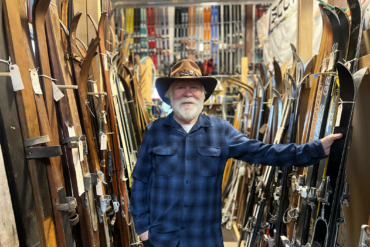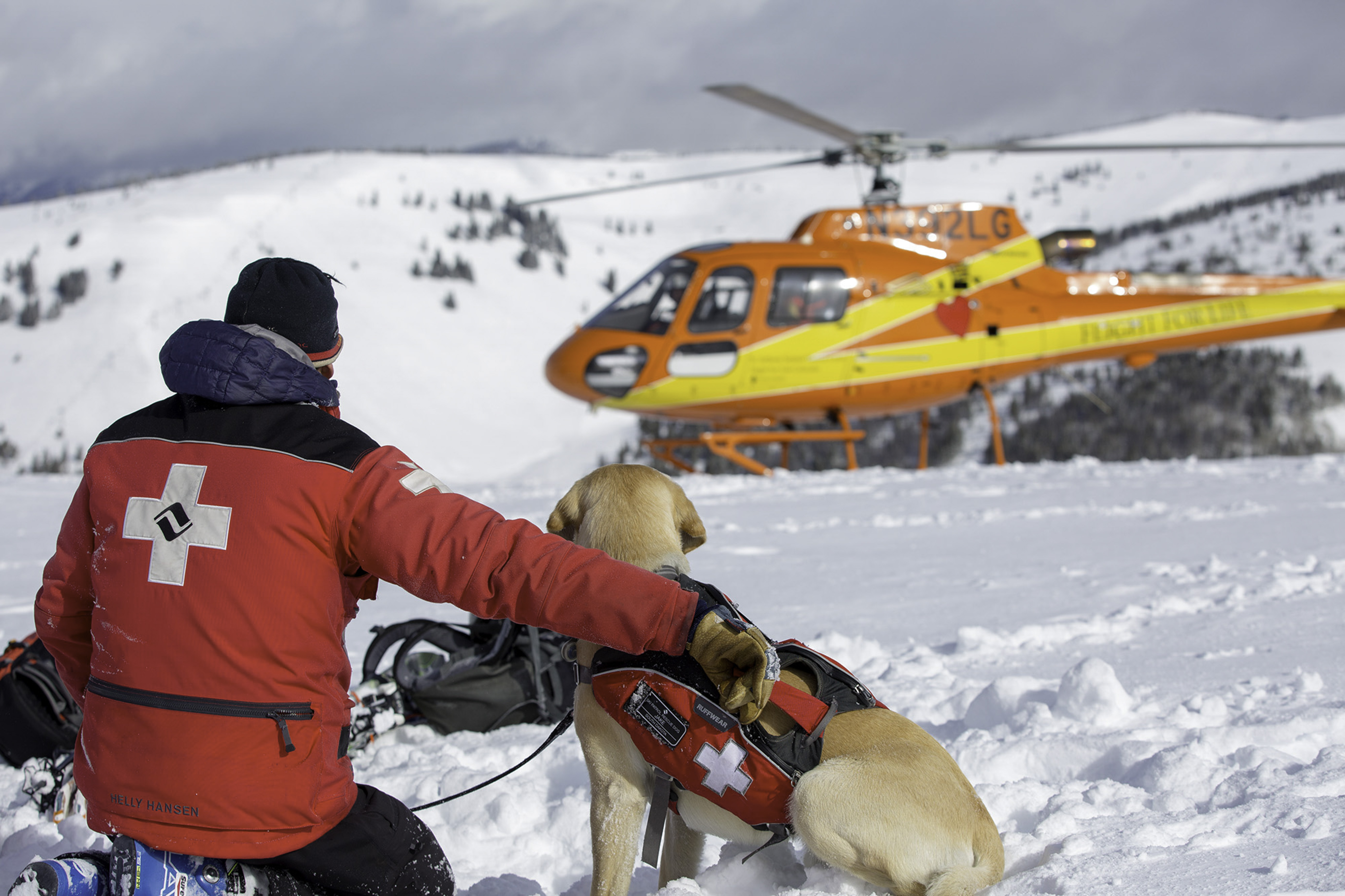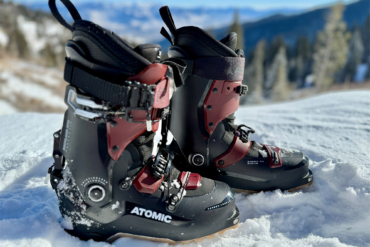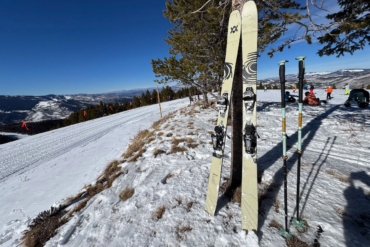Part II of our “Best in Show” series highlights a stock of award-worthy introductions as seen at last week’s Outdoor Retailer trade show. (See part I, published earlier this week, here.) From goggles with cameras and video screens to “cleat-equipped” skis, this gear represents some of the hottest new stuff shipping to stores this year. —Stephen Regenold
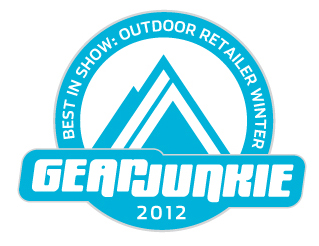
Ultimate Outdoor Watch — $600 for an outdoors watch? That’s the damage for the Suunto Ambit. But this new-school outdoors/fitness watch offers something unique to the diehard audience it’ll cater to: The Ambit includes built-in GPS as well as an accelerometer, and the two technologies work together for greater accuracy, Suunto claims. “This feature combines the best of both GPS frequencies and accelerometer technology to provide an optimized and fused signal with accurate and precise speed data,” Suunto explains.
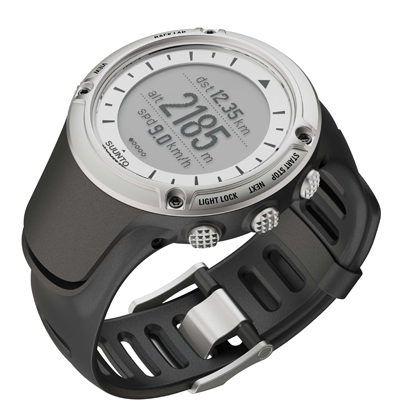
Pricey for sure. But a neat innovation and a sleek design. The Ambit feels like a regular workout watch on the wrist. It has heart-rate functions, speed, pace, elevation, distance, temperature, compass, all clock/alarm features, plus tracking functions with GPS. One of our reporters noted that “if it works as advertised the watch will be a total solution for training and exploration.”
In-Goggle Information System — Recon Instruments’ in-goggle LCD screen has been around for a couple years. But Smith Optics brings together Recon’s latest-generation system integrated into a top-shelf product, the I/O Recon Goggle, that can do such things as display your skiing speed in real-time or connect wirelessly to a smart phone in your jacket pocket to let you read text messages and emails sent from friends via a tiny display screen that sits inches from your eye.
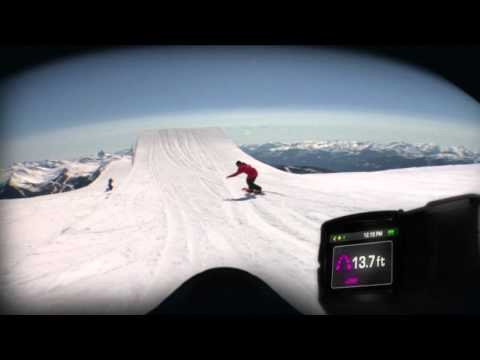
Crazy expensive ($650!) and crazy cool, the I/O Recon Goggle uses Bluetooth, GPS, an accelerometer, a gyroscope, altimeter and temperature sensors to convey speed, jump, vertical feet skied, altitude, on-mountain location, distance traveled, and outside temp readings, to name a few.

We tried the goggles on at the OR Show. They are plush and comfortable, though quite big on the face. The frame is exaggerated to accommodate the Recon LCD. Glance down and you see the little screen, its info streaming by and easy enough to read if you pay attention. (The company compares the view as like looking at a 14-inch laptop screen set on a desk.)
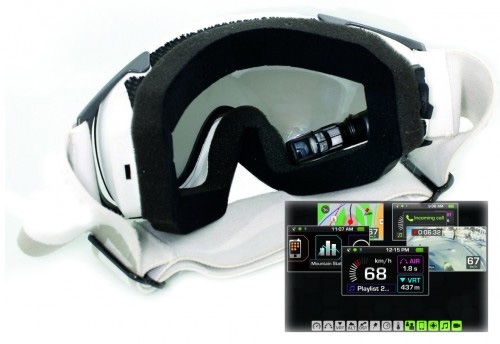
Beyond the LCD tech, the I/O Recon Goggles have a new type of anti-fog coating (“5X Anti-Fog Inner Lens,” Smith dubs it) that uses chemical micro-etching to create invisible aberrations inside the goggle lens said to fight moisture’s propensity to stick to smooth surfaces and fog up.
Red Racing Shoe — “We did not set out to make a minimal shoe.” That’s according to Jeff Dill, a product manager at Salomon. “We wanted to make a race shoe that could win.” The Sense, a to-be-released model from Salomon, ended up embracing both those things — the shoe is indeed lightweight (about 6.8 ounces in a men’s size 9) as well as fast: Salomon athlete Kilian Jornet won multiple ultra races this past season in the Sense shoe or iterations of the design, which Salomon has been working on for almost two years.
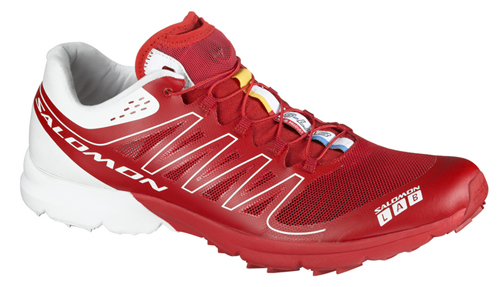
The sleek Salomon kicks will not come cheap. The company is looking at $200 for the msrp when they hit stores later this year. What makes them special? In hand, you can tell the shoes are made well and constructed to take much abuse. Dill explained to us at the OR Show that the shoes are essentially handmade one by one because of intricate overlays on the uppers.
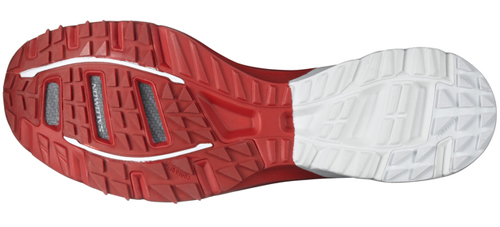
The company sells the shoe as offering “natural foot motion and forefoot running.” I am drooling to try them out. The shoes (unlike most Salomons) offer the aforementioned light weight, a low heel height, flexible forefoot, 4mm of drop, and the company’s quick-lacing Kevlar cinch system that’s become synonymous with getting shoes on fast and easy and perpetuating the Salomon theme of “all things speed.”
Hydration 2.0 — Even though GEIGERRIG Hydration Packs have been around a couple years, the company used OR to debut some new features. Our contributing editor, Jason Magness, was adamant that we include the company in the “Best in Show” mix. “I gotta press this one a little,” he wrote in our post-show meeting notes. “It is nothing short of a game changer in the hydration world.”
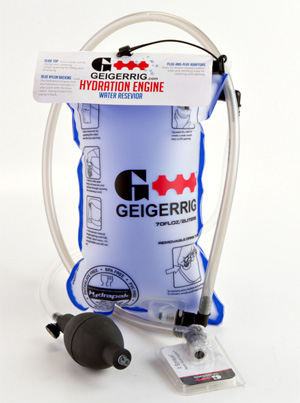
Those are strong words coming from Magness, who is among our most core and serious testers. He wrote that the GEIGERRIG hydration units are different in several ways: There’s an in-line filter that lets you scoop and drink water from a stream (built-in filtering!); the unit has a pressurizing bulb to let you squirt water into your mouth (so you do not have to suck through the filter); it’s easy to clean (flip it inside out and throw it in the dishwasher); and the bladder is “seemingly indestructible,” Magness wrote.

The company, based in Ogden, Utah, used this Winter OR show to launch its GEIGERRIG “hydration engine” (that’s what they call the system) as a stand-alone product for integration into any hydration-compatible backpack. To facilitate this, the company offered, for the first time, its bulb-pump mechanism in a pouch so it can attach onto any pack harness strap. A “tube garage” component to protect and insulate the drink tube was another new item from GEIGERRIG. Drink up!
Bullet Cam — Small and seemingly bomb-proof, the XD1080 Video Camera System from Replay caught one of our reporter’s eye on the show floor for its anodized, rugged aluminum housing and features like vibration feedback (so you know when it is on, off, recording, etc., by feel, not just blinking L.E.D. lights) and waterproof umbilical cables for connecting a bigger battery in case of long-record needs.

The Replay camera, $300, can tether to a wireless mic for better than expected audio from a common helmet cam. The lens has a wide angle (135 degrees) and an F3.1 aperture for clarity and accurate color. It has a 5MP CMOS sensor and is billed as the smallest and lightest HD action-camera on the market.
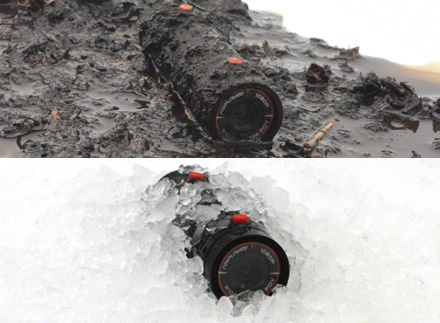
Packable ‘Pod’ Boot — We covered Timberland’s summertime predecessor of this modular winter boot in our post “Fold-in-Half, Zip-up Backpacking Shoe.” The cousin product unveiled at the OR Show, the winter Radler boot, to us seemed even more functional in the outdoors.
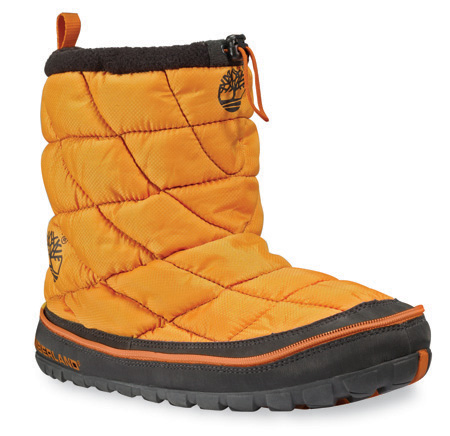
Essentially, these are booties that zip together in a pod that’s small and stuff-able in the bottom of a winter pack. Once at a camp, unzip the Radlers and you have two booties with plush insulated uppers and treaded rubber soles ready to wear. Slick! $95 when they come to market in mid-2012.
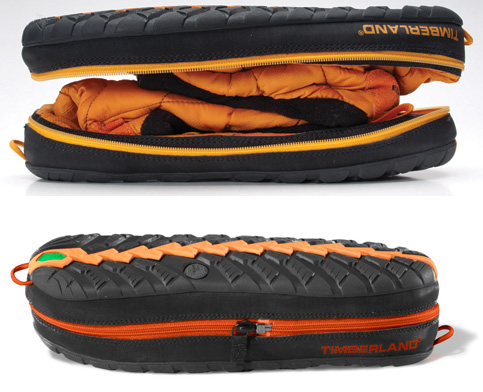
Ski Google TV — We wrote about these Zeal Optics goggles in a post last week, “Ski Goggles have Built-In HD Camera,” and the title pretty much says it all: These are normal ski goggles with a camera mounted in the upper-middle area so you can record skier’s-eye-view footage without the fuss of an added device.
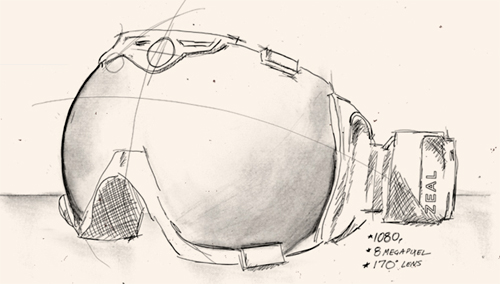
As hybrid products go, the to-be-released iON Goggle makes sense. The camera captures 1080p HD video, audio, and 8-megapixel photos. It has a wide lens and can be operated without removing your gloves via buttons on the goggle frame. A rechargeable lithium-ion battery gives up to a six-hour run time. $399 when they come to market in time for the 2012/13 ski season.
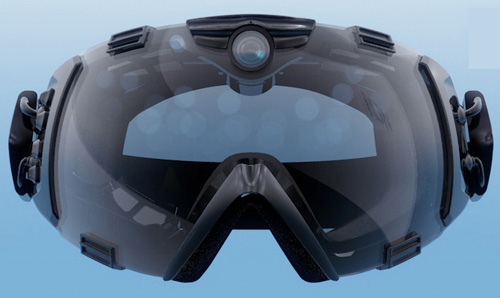
Fleece ‘Puffy’ Jacket — In part I of our “Best in Show” series this winter we awarded innovative goose down and wool-based insulated pieces. So this round we’re giving a nod to synthetic fleece. A new jacket from The North Face, the Polar Hooded Jacket, incorporates a high-loft Polartec fleece stuffed inside softshell fabric to create a new type of insulated outerwear top. The company touts “the warmth of a puffy jacket with the moisture-wicking properties of fleece and the protection of a softshell.”

The Polar Hooded Jacket has mapped Polartec Power Shield fabric and the high-loft fleece stuffed in for warmth on the shoulders and back. Other areas are insulation-free to promote breathability. The company advertised superiority to down-insulated jackets because the fleece insulation is more stable than goose feathers and does not require the fabric to be sealed up. (Feathers escape unless the fabric is tightly sealed.)
With high-loft fleece, The North Face was able to use a more breathable fabric from Polartec on the inside of the jacket to improve sweat movement and air permeability in an effort to keep you drier, but still warm!, while on the move. $299; available in mid-2012.
Boot + Slipper — Teva’s Lifty Collection, with men’s and women’s styles, features hybrid winter boots with waterproof outers and bootie slippers hidden inside. The boot part has Thinsulate insulation, an EVA midsole, and a sticky-rubber outsole. Inside, the liner pulls out to function as a wear-around-the-yurt bootie that’ll keep your piggies toasty after you leave the “shell” at the door.
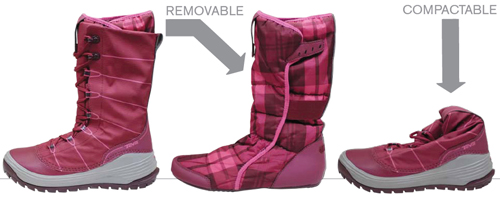
In its marketing for this hybrid boot Teva asks “Where is it written that winter boots have to be heavy, boring, un-packable, toboggans for your feet?” The Lifty Collection boots, which will cost $170 a pair, answer with a very “non-toboggan” option — light, pink (for women), packable, and modular — that were a stand-out among the throng of normal winter kicks displayed around the trade show hall.
Spoon Ski — The first-generation of this avant-garde ski debuted at the SIA trade show last year. In September, GearJunkie covered the second generation Spoon 150 ski, which was on display for the first time at the OR Show last week. It is a unique and award-worthy creation, including a never-before-seen design with six “cleats” on the ski base that protrude to add grip on what would otherwise be an unwieldy convex base.

DPS Skis, based in Salt Lake City, dubs the Spoon ski as the “most powerful and revolutionary powder ski ever built.” Its fat, wide, and convex shape adds float in powder, more speed, and greater control in the deep white stuff, the company says.
The “cleats,” which are downward-facing bumps in the ski base, give grip to the ski design in non-powder situations, company founder Stephan Drake told GearJunkie. (If there were no cleats, Drake noted, the ski would slide out from beneath you “wildly and dangerously” in anything but deep powder snow.) DPS will launch the Spoon in 2012 at a sky high price between $1,400 and $1,700 a pair.

Movable Insulation — The Ripcor from Loki is billed as the first jacket in the world to offer “retractable insulation.” Huh? Right, essentially the jacket has panels of insulation inside that can be manipulated by tugging on cords. Pull the jacket’s blue cords and you “retract” a panel of insulation to stuff it aside when you’re too warm. Conversely, a user can pull a set of red cords to re-expand the insulation panel and add warmth back again to the shell.
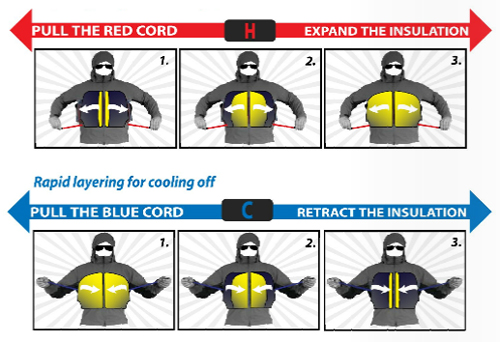
Beyond the noteworthy insulation feature, Loki includes its signature face-shield in the hood as well as shell mitts built-in (they fold away into the jacket sleeve cuffs when not in use). The Ripcor is made of a waterproof-breathable fabric. The jacket will cost $499. It is set to launch in October before winter takes its grip and we head into the future of 2013.
—See part I of “Best in Show” for more innovative items coming in 2012. Author Stephen Regenold is founder of www.gearjunkie.com. Jason Magness, Chelsey Magness, Pat Petschel, and Sam Salwei contributed to this report.


